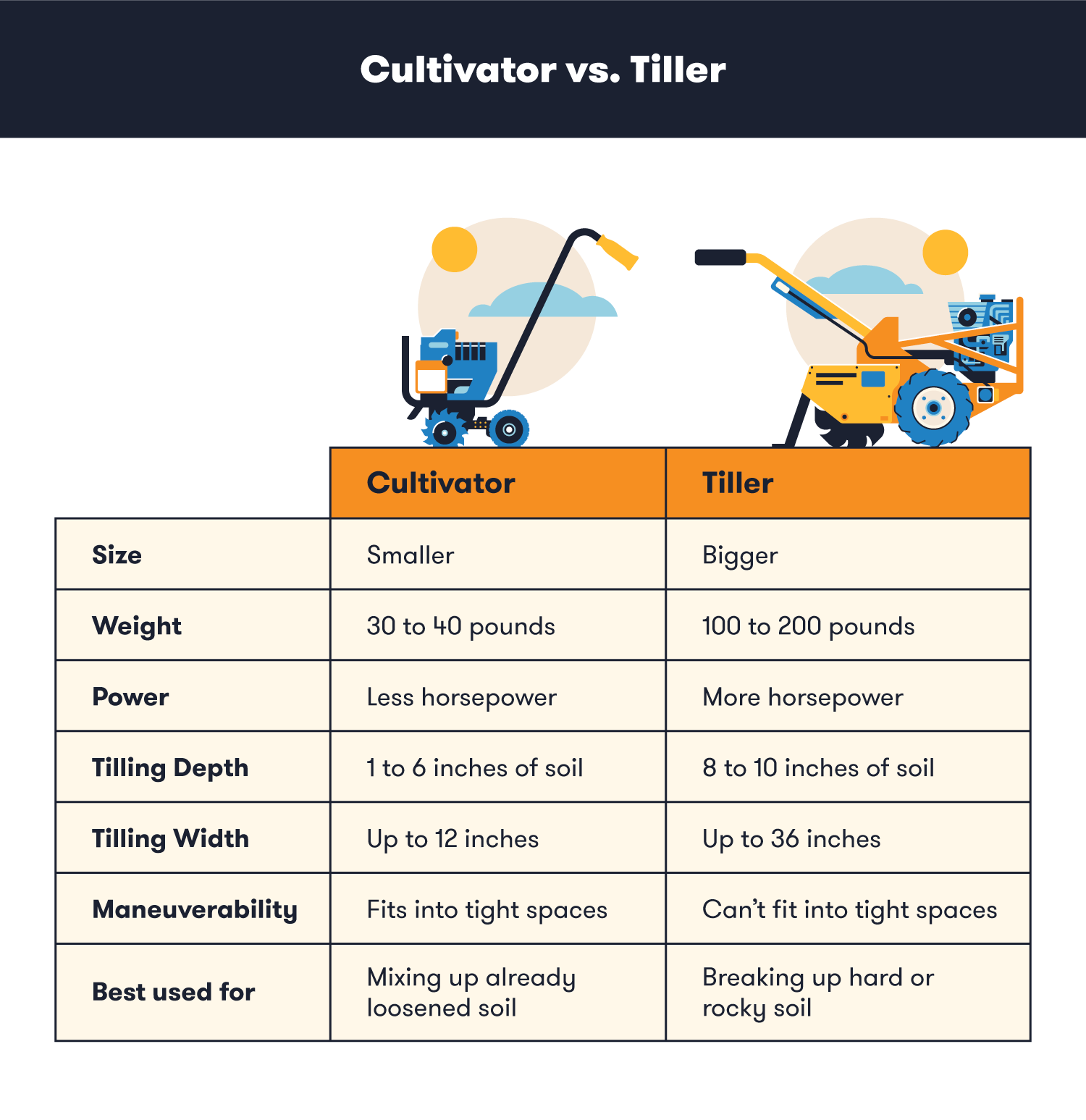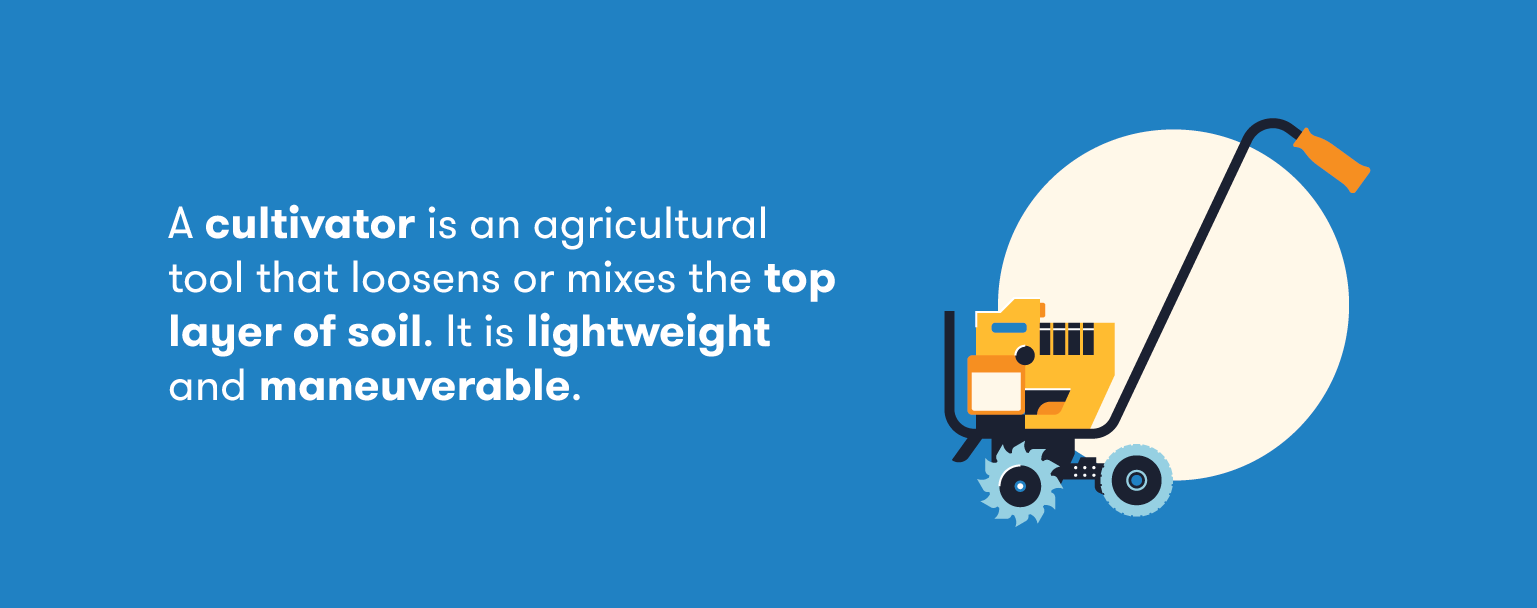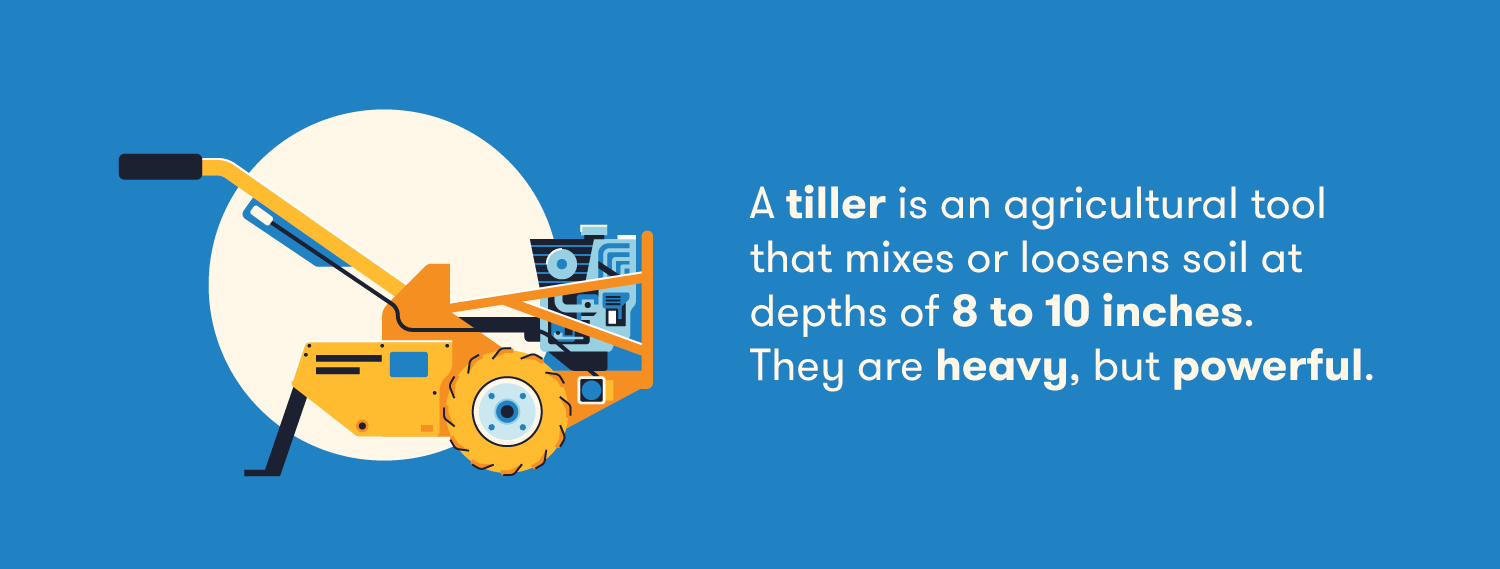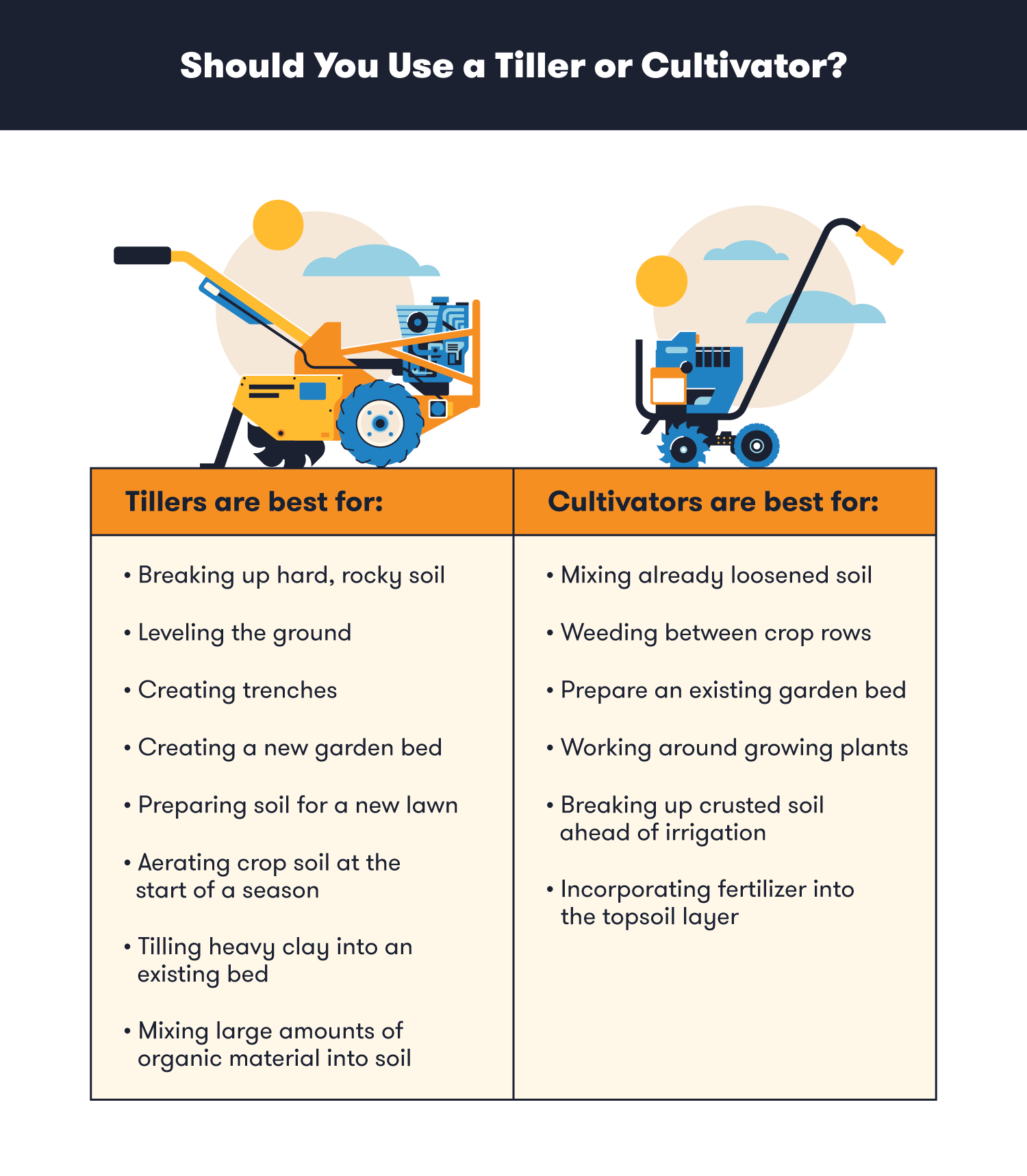Cultivators and rototillers, or tillers, are agricultural tools useful for breaking up soil. However, they shouldn’t be thought of as the same thing. Each has different benefits and uses. So, when it comes to cultivators vs. tillers, what’s the difference?
Here’s what you need to know, including how to pick the right tool for the job.
Explore All Earthmoving Equipment
What’s the Difference Between a Cultivator and Tiller?
The main differences between a cultivator and a tiller are size and power. Cultivators are smaller than tillers, have less horsepower and don’t till the soil as deeply. Because of this, cultivators are usually best used for mixing already loosened soil, like when incorporating fertilizer. As the more powerful tool, tillers are best used for breaking up hard or rocky ground, like when preparing a new crop bed before sowing seeds.

What Is a Cultivator?
A cultivator is an agricultural tool that works with the top layer of soil — usually the first 1 to 6 inches. It’s relatively lightweight, about 30 to 40 pounds, and is easy to transport and store. Cultivators usually cost between $50 and $400, or you can rent one for $45 to $65 per day.

You can think of cultivators as replacing garden hoes. They are best for small projects that require finesse, like aerating soil around plants with root systems you don’t want to disturb. They can also make quick work of weeding your garden or incorporating fertilizer into the top layer of soil.
Best For: Small projects that require finesse
What Is a Tiller?
A tiller is an agricultural tool that can work at soil depths of 8 to 10 inches. They are powerful tools but typically heavy, often weighing between 100 and 200 pounds. The cost of a tiller is anywhere from $200 to $2,000, or you can rent one for $100 to $250 per day.

You can think of tillers as replacing a shovel or mattock. They are best for large projects that require more digging power, like when you need to break up hard, rocky soil for a new garden bed. They can also help incorporate heavy clay fertilizers into deeper soil or even dig trenches for irrigation.
Depending on the job, you may want to use a tiller with rear tines or front tines.
Best For: Large projects that require power
Rear Tine Tillers
Rear tine tillers are just what they sound like: Tillers with rotating tines at the back of the machine with wheels sitting at the machine’s front. This design makes it easier to leverage the machines weight to create more power when tilling. However, it also makes the machine less maneuverable.
Best For: Breaking up hard, rocky soil
Front Tine Tillers
Front tine tillers feature rotating tines at the machine’s front and wheels at the machine’s back. Having the wheels at the back makes it easier to turn, reverse and maneuver the tool. However, they are still not as maneuverable as a cultivator.
Best For: Breaking moderately hard ground
Tiller vs. Cultivator: Which Tool Is Best for the Job?
Does your project have you asking yourself, “Do I need a tiller or cultivator?” If so, here’s a quick guide.
What Are Cultivators Used For?
Cultivators are best for smaller projects that require more maneuvering or finesse. This includes mixing up already loosened soil, incorporating fertilizer into topsoil, weeding between crop rows, breaking up crusted soil before irrigation and working around growing plants without disrupting their roots.
What Are Tillers Used For?
Tillers are best for larger projects that require more power. This includes breaking up hard or rocky soil, creating trenches, creating a new garden bed, preparing soil for a new lawn, aerating crop soil at the start of a season, tilling heavy clay into an existing bed, mixing large amounts of organic material into soil or leveling the ground.

FAQ About Cultivators and Tillers
Have additional questions about cultivators and tillers? Here are answers to the most commonly asked questions.
What Does a Tiller Do?
Tillers break up hard, rocky soil, usually at depths between 8 to 10 inches deep. They are useful for large agricultural projects that require power, like creating a new garden bed or aerating crop soil at the start of a new season.
What Does a Cultivator Do?
Cultivators loosen up or mix the top layers of soil, usually at depths between 1 to 6 inches. They are useful for small agricultural projects that require finesse, like weeding between crop rows or working around growing plants.
Can You Use a Cultivator as a Tiller?
Cultivators do not make an ideal replacement for tillers. They don’t have the same power capabilities, so they may not be able to loosen up tough dirt the way a tiller would. Using a cultivator instead of a tiller would be like using a garden hoe instead of a shovel. While it may still move some soil, it won’t be to nearly the same degree.
Are Tillers and Cultivators Gas or Electric?
You can find both tillers and cultivators in gas, gas/oil, cordless electric and corded electric models. In general, gas cultivators and tillers have more power, but may be heavier and noisier. Electric models tend to be more lightweight and quiet, but may have less power.
Whether your project involves large-scale agriculture or simply landscaping a yard, using the right tool can help make things go more quickly. When it comes to a cultivator vs. a tiller, choose a cultivator for small projects that require finesse and a tiller for large projects that require power.
If you’d like to rent any tools for your project, contact BigRentz to check availability in your area.
Explore All Earthmoving Equipment